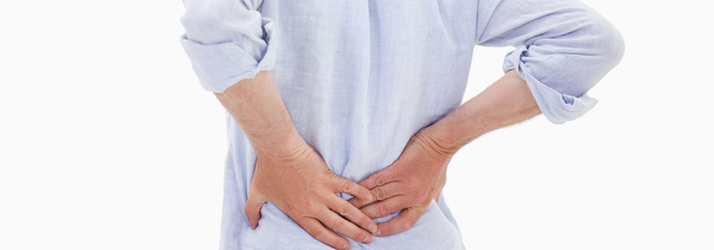Sit Less Do More: A Guide to Stretching and Reducing Lower Back Pain in Thousand Oaks CA
Sit Less Do More: A Guide to Stretching and Reducing Lower Back Pain in Thousand Oaks CA

I recently have seen many new patients come through our doors who suffer from lower back pain in Thousand Oaks CA. Living with low back pain can be a debilitating and a frustrating experience for many people. In fact, it is estimated that up to 80% of adults will experience some form of low back pain at least once in their lifetime (1). Low back pain can have a significant impact on daily life, making it difficult to carry out even the most basic tasks such as sitting, standing, or walking.
One of the common factors I see that often contributes to lower back pain is sitting for prolonged periods of time. With modern technology and the rise of desk jobs, many people spend hours each day sitting at a computer or in front of a TV screen. This sedentary lifestyle can lead to muscle imbalances and postural issues, causing unnecessary stress on the lower back muscles and joints. In this article, we will explore how sitting affects the lower back and provide tips on how to reduce the risk of developing low back pain from sitting.
The Impact of Low Back Pain on Daily Life in Thousand Oaks CA
Low back pain is one of the most common reasons why people miss work or visit their doctor (2). The condition can range from mild discomfort to severe chronic pain that affects everyday functioning. Individuals with low back pain may experience difficulty completing simple tasks such as bending over or lifting objects off the ground without feeling intense discomfort. The impact that low back pain has on daily life extends beyond physical limitations as well.
Chronic low back pain can also take an emotional toll on individuals by causing anxiety, depression, and feelings of hopelessness (3). Additionally, individuals who suffer from chronic low back pain may feel isolated or restless when they are unable to participate in social activities or hobbies they once enjoyed due to limitations caused by their condition.
While there are several factors that contribute to low back pain such as improper lifting techniques or injuries, sitting for prolonged periods of time is a common risk factor. Sitting for extended periods can lead to muscle imbalances and postural issues, which can result in excessive pressure on the lower back muscles and joints. When sitting for prolonged periods, individuals tend to slouch or lean forward, leading to a forward head position and rounded shoulders.
This posture can cause undue strain on the neck and upper back muscles while simultaneously weakening the lower back muscles (4). Additionally, when seated, individuals often maintain a flexed or bent position in the lower spine.
This constant flexion can put significant pressure on the lumbar discs and increase the likelihood of disc herniation or bulge formation (5). Low back pain is a prevalent condition that impacts daily life significantly.
Furthermore, sitting for prolonged periods can exacerbate low back pain by leading to muscle imbalances and postural issues that cause excessive pressure on the lower back muscles and joints. In the following sections of this article, we will explore methods to reduce low back pain caused by sitting through stretches, exercises and other useful tips.
Muscle Imbalances and Postural Issues
When you sit for extended periods, the muscles in your lower back can become weak and overstretched, while the muscles in your hips and legs can become tight and shortened. This muscle imbalance can lead to postural issues that affect the alignment of your spine.
Over time, this misalignment can put pressure on your lower back discs, leading to pain. In addition to affecting the muscles of the lower back, prolonged sitting also affects other parts of the body.
For example, sitting for long hours causes your hip flexors to remain in a shortened position which can make them stiffen over time. This often causes difficulty when trying to stand up straight after being seated for an extended period.
Pressure on Lower Back Discs
Sitting puts pressure on the lumbar discs at a rate twice as much as standing because sitting increases intra-discal pressure. Additionally, certain postures while sitting such as slouching or hunching over amplify this effect more severely than normal posture.
The increased pressure on these spinal discs could lead to herniation or bulging of the discs which are major contributors to lower back pain. Disc herniations occur when one of these cushion-like structures becomes compressed and bulges out where it shouldnt be causing pain around that area.
Bulging disc occurs when there is less severe damage but still enough damage has occurred that a part of it starts protruding out forcing nearby nerves near them becoming irritated causing sharp pain that affects a person's ability to perform everyday tasks comfortably without feeling agony. Overall, it is important to limit prolonged sitting periods if possible as it leads to muscle imbalances, postural issues increasing disc compression resulting in herniation or bulging along with several other consequences all contributing together towards significant lower back pain discomfort.
The Importance of Stretching for Lower Back Pain
Stretching is an often overlooked but essential component in managing lower back pain. Regular stretching can help reduce muscle tension, increase flexibility, and improve circulation, all of which can help alleviate lower back pain. When done correctly and consistently, stretching can improve overall spinal health and prevent future injuries.
Child's Pose Stretch
The Child's Pose stretch is a gentle yoga pose that helps stretch the muscles in the lower back. To perform this stretch:
- Start on your hands and knees with your palms flat on the ground.
- Slowly push your hips backwards until your buttocks rest on your heels.
- Extend your arms out in front of you and relax your head down towards the ground.
- Hold this position for 30 seconds to 1 minute while taking deep breaths.
Cat-Cow Stretch
The Cat-Cow stretch is another yoga pose that helps improve mobility in the spine while stretching the muscles of the lower back. To perform this stretch:
- Start on your hands and knees with your palms flat on the ground.
- Arch your back upwards towards the ceiling while tucking in your chin (this is known as cat pose).
- Slowly lower yourself down into cow pose by arching your back downwards while lifting up your head.
- Repeat this sequence 5-10 times, focusing on slow, controlled movements.
Piriformis Stretch
The piriformis muscle is located deep within the gluteal muscles and can contribute to low back pain if it becomes tight or inflamed. To perform this stretch:
- Lie down on a flat surface with both feet planted firmly on the ground.
- Cross one ankle over opposite knee, creating a figure 4 shape with your legs.
- Use both hands to gently pull the uncrossed leg towards your chest until you feel a stretch in your gluteal muscles.
- Hold this position for 30 seconds to 1 minute while taking deep breaths, and then switch sides.
Hip Flexor Stretch
The hip flexors connect the hips to the lower back and can contribute to low back pain if they become tight or shortened. To perform this stretch:
- Start kneeling on one knee with the other foot planted on the ground in front of you at a 90-degree angle.
- Push forward with your hips, keeping your spine straight until you feel a stretch in your hip flexor muscles.
- Hold this position for 30 seconds to 1 minute while taking deep breaths, and then switch sides. By incorporating these stretches into your daily routine, you can help alleviate lower back pain and improve overall spinal health.
Remember to always listen to your body and stop any exercise that causes pain or discomfort. It's important to work closely with a healthcare professional if you have severe or chronic low back pain.
Tips for Maintaining Good Posture While Sitting
Maintaining good posture is key to reducing lower back pain while sitting. Poor posture can lead to muscle imbalances, strain on the lower back muscles, and increased pressure on the spinal discs. To maintain good posture while sitting:
- Keep your feet flat on the ground
- Keep your knees at a 90-degree angle
- Sit up straight with your shoulders relaxed
- Use a lumbar support cushion or roll to support the natural curve of your lower back
- Adjusting chair height can also help with maintaining good posture. The height of your chair should allow your feet to rest flat on the ground, with your knees at a 90-degree angle.
- If you find that your chair is too low, try adding a cushion or adjusting the seat height. If it's too high, adjust it so that you can sit comfortably with your feet flat on the ground.
While we often think of lower back pain as being caused by sudden injury or heavy lifting, everyday activities like driving, bad office ergonomcs, prolonged sitting or computer use can also contribute to discomfort and pain. It's important to be mindful of posture and ergonomics during these activities, taking breaks when necessary and stretching regularly. By being aware of these factors and making small adjustments to our daily routines, we can reduce the likelihood of developing lower back pain and improve our overall well-being. If you suffer from lower back pain we urge you to call the office and talk to one of our doctors. We look forward to helping you on your path to a pain-free and more active life.
Monday
8:00am - 12:00pm
2:00pm - 6:00pm
Tuesday
8:00am - 12:00pm
2:00pm - 6:00pm
Wednesday
8:00am - 12:00pm
2:00pm - 6:00pm
Thursday
Closed
Friday
8:00am - 12:00pm
2:00pm - 6:00pm
Saturday & Sunday
Closed

Complete Performance Center
101 Hodencamp Rd STE 103
Thousand Oaks, CA 91360




